Popular Affectionate Nicknames Across 14 Languages

Written by
Ernest Bio Bogore

Reviewed by
Ibrahim Litinine

Across cultures and languages, terms of endearment serve as linguistic bridges connecting couples in their most intimate moments. Our comprehensive global survey spanning 14 languages offers fascinating insights into how different cultures express affection through nicknames, revealing both universal patterns and cultural uniqueness.
Key Findings from Our Global Survey
Our international research uncovered several compelling patterns:
- Affectionate nicknames are used in 87% of romantic relationships worldwide
- 79% of respondents believe using pet names strengthens their relationship
- The top five globally used terms of endearment are: Babe, Love, Baby, Honey, and Dear
- In English-speaking countries, Babe, Honey, and Baby reign supreme
- Animal-themed nicknames appear consistently across most languages
The Language of Love: Most Popular Affectionate Nicknames Worldwide
Our extensive survey across 14 language groups revealed fascinating patterns in how couples express affection verbally. The research shows that while some terms transcend cultural boundaries, others reflect unique linguistic and cultural sensibilities.
Romance Languages
French speakers gravitate toward terms like "Bébé" (Baby), "Cheri" (Dear), "Mon Amour" (My love), "Mon Coeur" (My heart), and the endearing "Chaton" (Kitten).
Spanish speakers prefer "Amor" (Love), "Bebe" (Baby), "Cariño" (Dear), "Cielo" (Heaven/Sky), and the heartfelt "Corazón" (Heart).
Italian romantics choose "Amore" (Love), "Tesoro" (Treasure), "Amo" (I love), the playful "Cucciolo" (Puppy), and the diminutive "Piccolo" (Small).
Portuguese speakers favor "Bebê" (Baby), "Amor" (Love), "Querido/a" (Dear), the cute "Fofinho" (Cute), and the regal "Princesa" (Princess).
Germanic Languages
English speakers across regions show some variation:
- Overall: Babe, Honey, Baby, Sweetie, Love
- Australia: Babe, Honey, Baby, Love, Sweetie
- Canada: Honey, Babe, Sweetie, Baby, Love
- UK: Babe, Darling, Love, Honey, Baby
- US: Baby, Honey, Babe, Sweetie, Love
German speakers prefer "Schatz" (Treasure), "Maus" (Mouse), "Schätzchen" (Baby), "Hase" (Hare), and simply "Babe."
Dutch speakers choose "Liefje" (Sweetheart), "Lieverd" (Darling), "Schat" (Treasure), "Schatje" (Baby), and the universal "Babe."
Slavic and Eastern European Languages
Polish romantics use "Kochanie" (Baby), "Kotek" (Kitten), "Kotku" (Kitty), "Misiu" (Bear), and "Skarbie" (Honey).
Ukrainian speakers favor "Сонечко" (Ladybug), "Зайка" (Bunny), "Котик" (Cat), "Коханий" (Beloved), and "милий" (Nice).
Middle Eastern and Semitic Languages
Arabic speakers use "حبي" (My love), "حياتي" (My life), "روحي" (My soul), "عسلي" (Sweetie), and "حبيبي" (My darling).
Hebrew speakers prefer "בובי" (Bobby), "בייב" (Babe), "חיים שלי" (My life), "מתוק" (Sweetie), and "דבש" (Honey).
East Asian Languages
Japanese couples use "ハニー" (Honey), "ベイビー" (Baby), "愛" (Love), "ダーリン" (Darling), and "ディーア" (Dear).
Chinese speakers favor "宝贝" (Baby), "亲爱的" (Honey), "老公" (Husband), "甜心" (Sweetheart), and "老婆" (Wife).
Mediterranean Languages
Greek speakers use "αγάπη μου" (My love), "Μωρό μου" (My baby), "αγάπη" (Love), "μωρό" (Baby), and "ψυχή μου" (My soul).
When Endearments Fall Flat: Least Liked Nicknames
While most affectionate nicknames are received warmly, our survey revealed some terms that partners generally dislike. Interestingly, what works in one culture might fall flat in another.
Poorly Received Animal Names
Despite animal-themed nicknames being popular globally, specific animal references can miss the mark:
- Polish speakers unanimously reject animal names like "żabka" (Frog), "myszka" (Mouse), and "rybka" (Fish)
- Ukrainian speakers dislike "жаба" (Frog)
- Portuguese speakers avoid "Ursinho" (Little bear)
- Greek speakers reject "ζουζούνι" (Bug)
- French speakers dislike "Lapin" (Rabbit)
Cultural Variations in Reception
Some terms are embraced in certain languages while being rejected in others:
- "Darling" is cherished in Dutch, Spanish, and Japanese, but appears on the least-liked lists for German, Portuguese, and Hebrew
- "Princess" is popular in Portuguese but unwelcome in Japanese
- "Heart" is a top choice in Spanish but avoided in Italian and Portuguese
Universally Unpopular Terms
Across multiple languages, certain types of nicknames face consistent rejection:
- Infantilizing terms like "Child" (Arabic), "Little baby" (Greek)
- Body shape references like "Gordo/Gorda" (Fat/Fatty) in Spanish
- Formal address like "Full name" in Chinese
- Unusual food references like "Cupcake" in Japanese
The Psychology Behind Using Affectionate Nicknames
The widespread use of pet names isn't merely coincidental. Research indicates that 79% of participants believe these terms strengthen their relationship. Psychologists suggest several reasons for this effect:
- Creates Intimacy Boundaries: Exclusive nicknames establish a private language between partners that signals special intimacy.
- Fosters Psychological Safety: Using playful, affectionate terms helps create an environment where partners feel secure in expressing vulnerability.
- Recalls Early Relationship Energy: Nicknames often emerge during the honeymoon phase, and their continued use can reconnect partners to those initial feelings.
- Signals Acceptance: Using silly or childish terms signals complete acceptance of a partner without judgment.
- Facilitates Difficult Conversations: A loving nickname can soften communication when addressing challenging topics.
Cultural Context and Tone Variations
The survey revealed fascinating differences in how nicknames are expressed across cultures:
Tonal Variations
Languages naturally employ different tonal patterns when expressing endearments:
- Rising Tone Languages: Chinese, Dutch, English, German, Greek, Japanese, Polish, and Ukrainian speakers typically raise their tone when using affectionate nicknames
- Falling Tone Languages: Arabic and Spanish speakers generally lower their tone for terms of endearment
Public vs. Private Usage
Comfort with using affectionate nicknames varies significantly:
- 58% of respondents feel comfortable using pet names in public
- 42% reserve these terms for private settings
- Only 31% save their partner's contact information using an affectionate nickname
When Nicknames Become Uniquely Personal: Hall of Fame Examples
Some couples develop entirely unique terms of endearment that hold special meaning only within their relationship. Our research uncovered fascinating examples ranging from the sweet to the bizarre:
- Food-inspired: "Pork Chop" and "Baby," "Potato" and "Banana"
- Animal-themed: "My Little Tarantula" and "Darling," "My Ostrich" and "My Maggot"
- Contrast pairs: "Grumpy" and "Jackass," "Death" and "Princess"
- Unexpected objects: "Pickle" and "Gherkin," "Lettuce" and "Snickers"
- Character-inspired: "Captain Underpants" and "Starlord"
These personalized nicknames demonstrate how terms of endearment can evolve beyond conventional options, becoming unique relationship artifacts that capture the distinctive nature of each partnership.
The Evolution of Affectionate Nicknames in Digital Communication
With relationships increasingly conducted through digital platforms, affectionate nicknames have adapted to new communication channels:
- Emoji Pairings: Many couples supplement text nicknames with specific emoji combinations that take on private meanings
- Voice Messages: The tonal qualities of nicknames receive greater emphasis in audio messages
- Social Media Tags: Public displays of affection often include standardized hashtags of pet names
- Custom Stickers: Messaging platforms enable the creation of personalized sticker packs featuring couple-specific nicknames
This digital evolution has expanded the ways couples express intimacy through language, adding visual and audio dimensions to traditional verbal endearments.
Navigating Multicultural Relationships Through Nicknames
For couples from different linguistic backgrounds, terms of endearment can become bridges across cultural divides:
- Learning and using a partner's native language nicknames demonstrates cultural respect and appreciation
- Bilingual couples often develop hybrid nicknames combining elements from both languages
- Understanding the cultural connotations of certain terms helps avoid unintended negative associations
- Linguistics experts suggest that adapting to a partner's cultural nickname preferences can strengthen relationship bonds
Learn Any Language with Kylian AI
Private language lessons are expensive. Paying between 15 and 50 euros per lesson isn’t realistic for most people—especially when dozens of sessions are needed to see real progress.
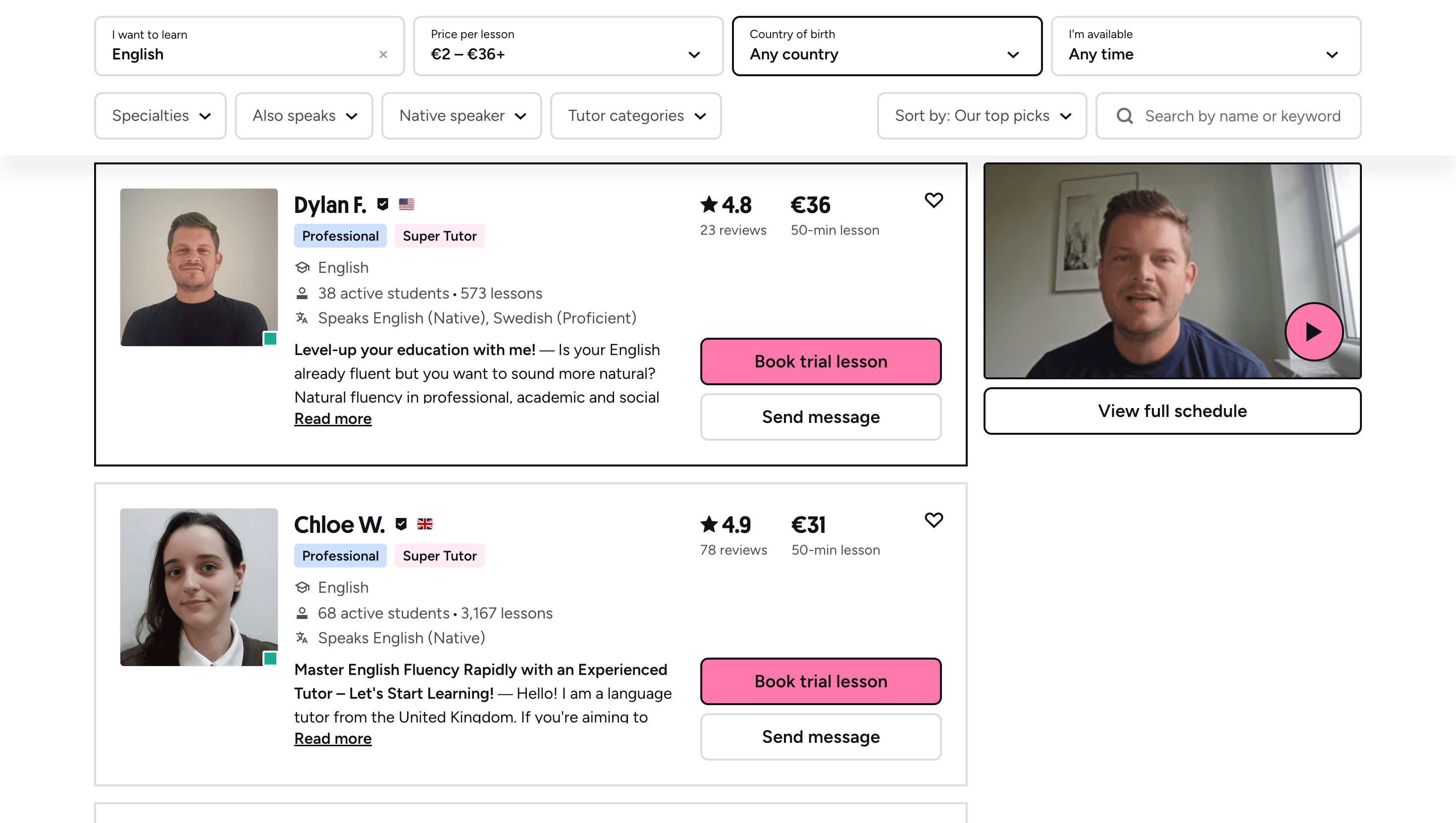
Many learners give up on language learning due to these high costs, missing out on valuable professional and personal opportunities.
That’s why we created Kylian: to make language learning accessible to everyone and help people master a foreign language without breaking the bank.
To get started, just tell Kylian which language you want to learn and what your native language is
Tired of teachers who don’t understand your specific struggles as a French speaker? Kylian’s advantage lies in its ability to teach any language using your native tongue as the foundation.
Unlike generic apps that offer the same content to everyone, Kylian explains concepts in your native language (French) and switches to the target language when necessary—perfectly adapting to your level and needs.
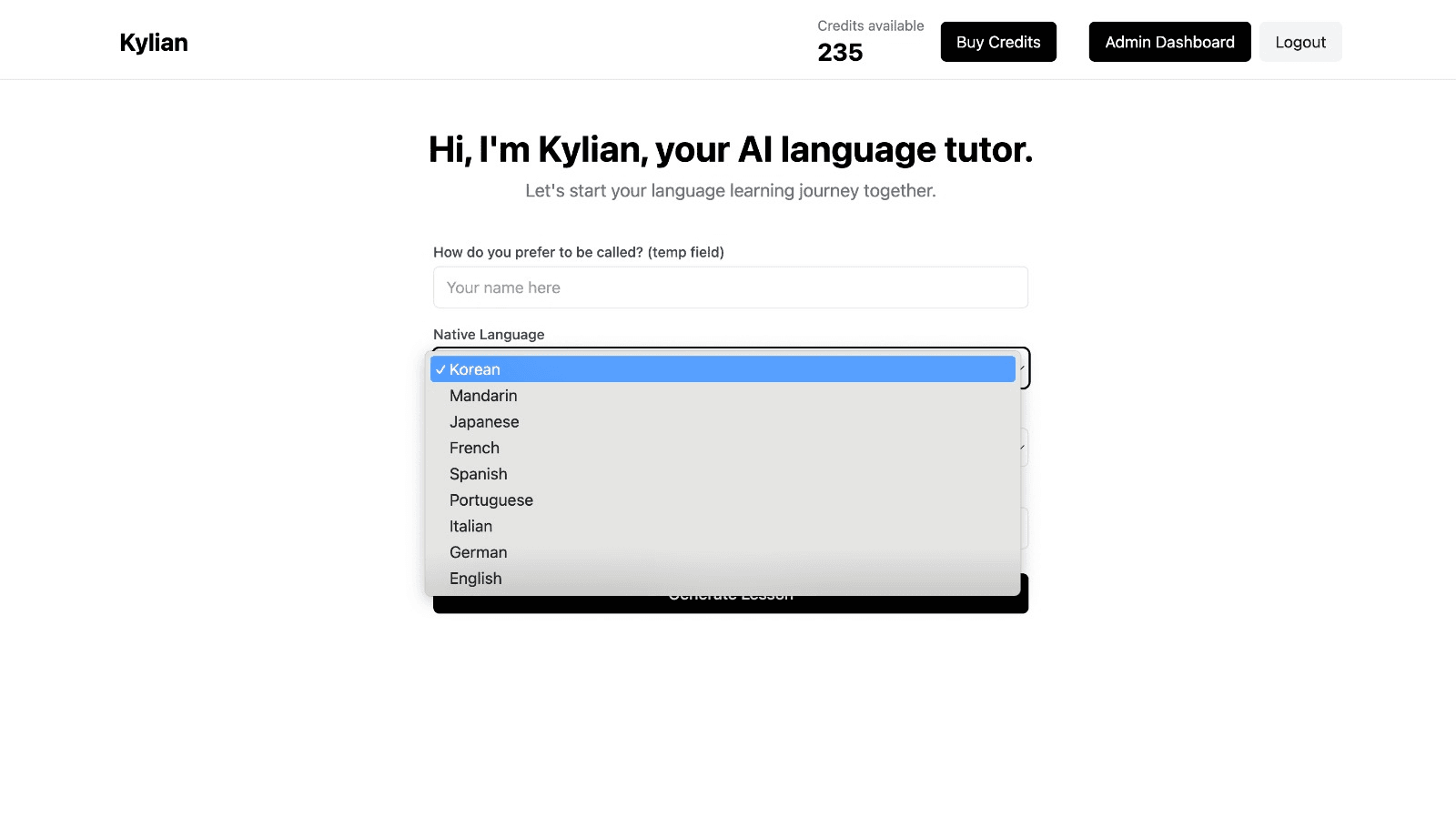
This personalization removes the frustration and confusion that are so common in traditional language learning.
Choose a specific topic you want to learn
Frustrated by language lessons that never cover exactly what you need? Kylian can teach you any aspect of a language—from pronunciation to advanced grammar—by focusing on your specific goals.
Avoid vague requests like “How can I improve my accent?” and be precise: “How do I pronounce the R like a native English speaker?” or “How do I conjugate the verb ‘to be’ in the present tense?”
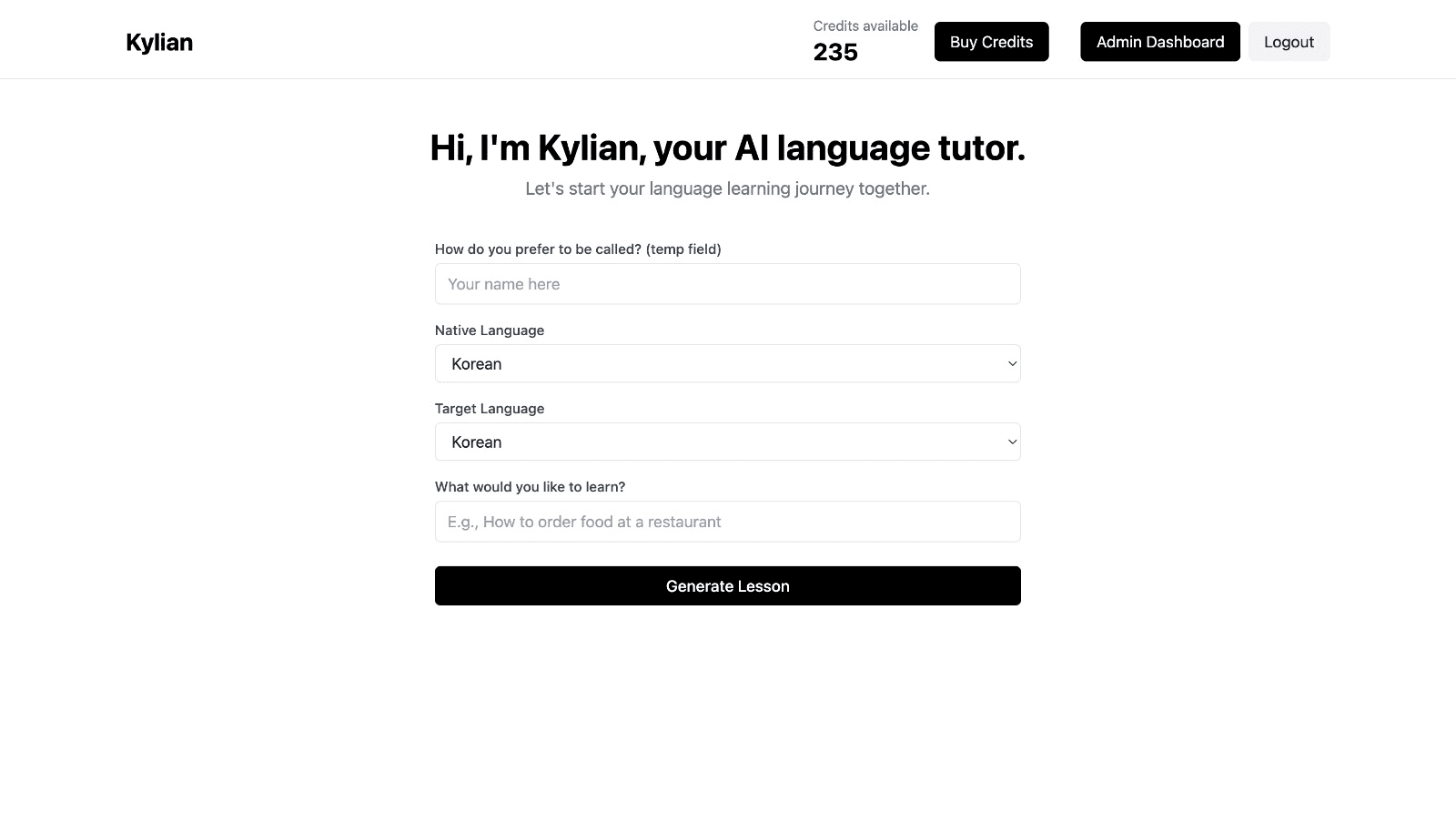
With Kylian, you’ll never again pay for irrelevant content or feel embarrassed asking “too basic” questions to a teacher. Your learning plan is entirely personalized.
Once you’ve chosen your topic, just hit the “Generate a Lesson” button, and within seconds, you’ll get a lesson designed exclusively for you.
Join the room to begin your lesson
The session feels like a one-on-one language class with a human tutor—but without the high price or time constraints.
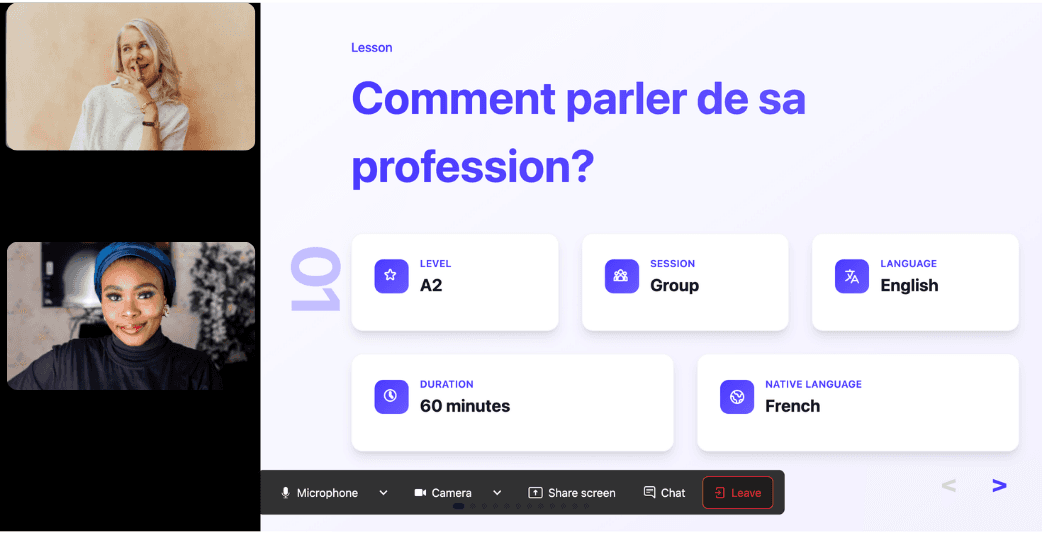
In a 25-minute lesson, Kylian teaches exactly what you need to know about your chosen topic: the nuances that textbooks never explain, key cultural differences between French and your target language, grammar rules, and much more.
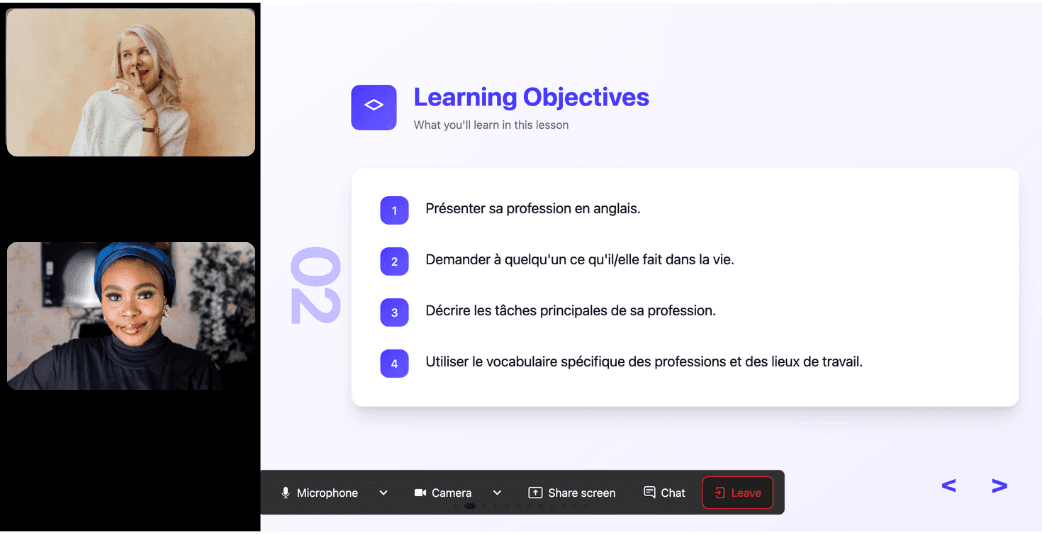
Ever felt frustrated trying to keep up with a native-speaking teacher, or embarrassed to ask for something to be repeated? With Kylian, that problem disappears. It switches intelligently between French and the target language depending on your level, helping you understand every concept at your own pace.
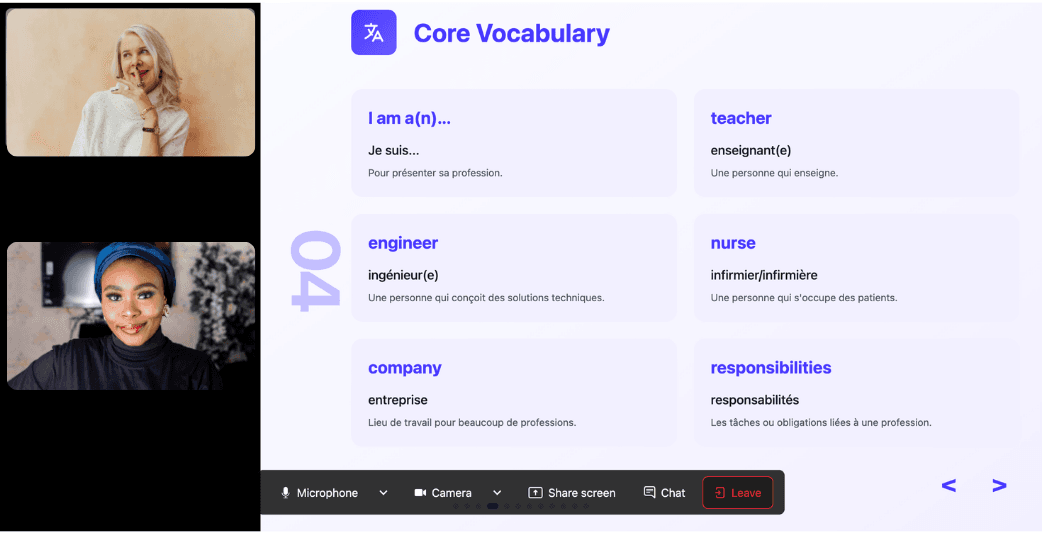
During the lesson, Kylian uses role-plays, real-life examples, and adapts to your learning style. Didn’t understand something? No problem—you can pause Kylian anytime to ask for clarification, without fear of being judged.
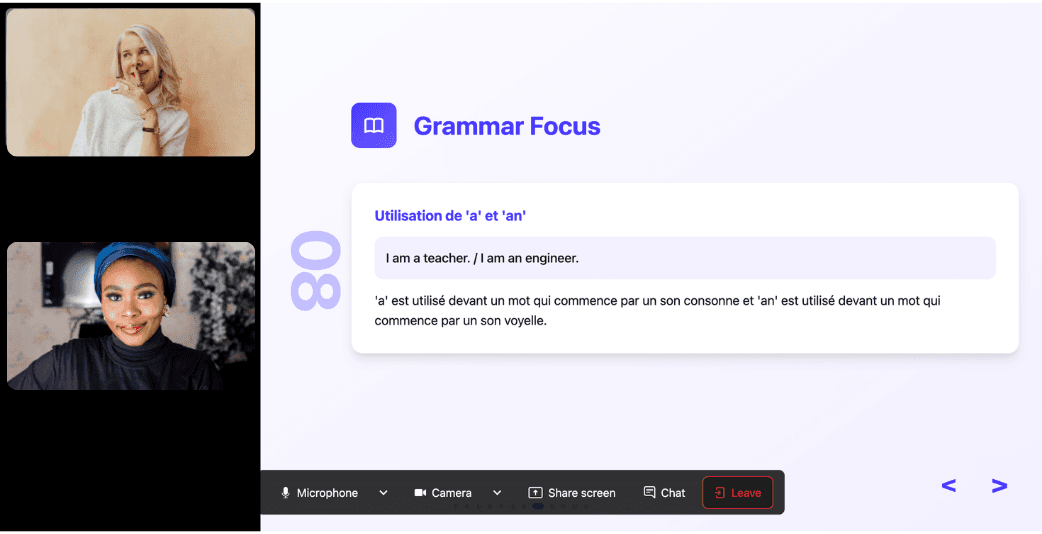
Ask all the questions you want, repeat sections if needed, and customize your learning experience in ways traditional teachers and generic apps simply can’t match.
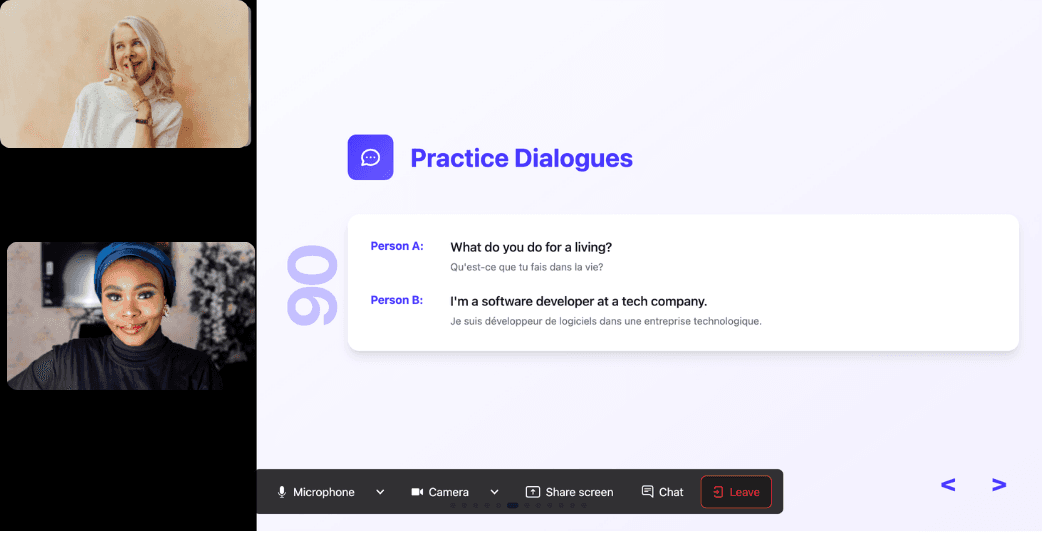
With 24/7 access at a fraction of the cost of private lessons, Kylian removes all the barriers that have kept you from mastering the language you’ve always wanted to learn.
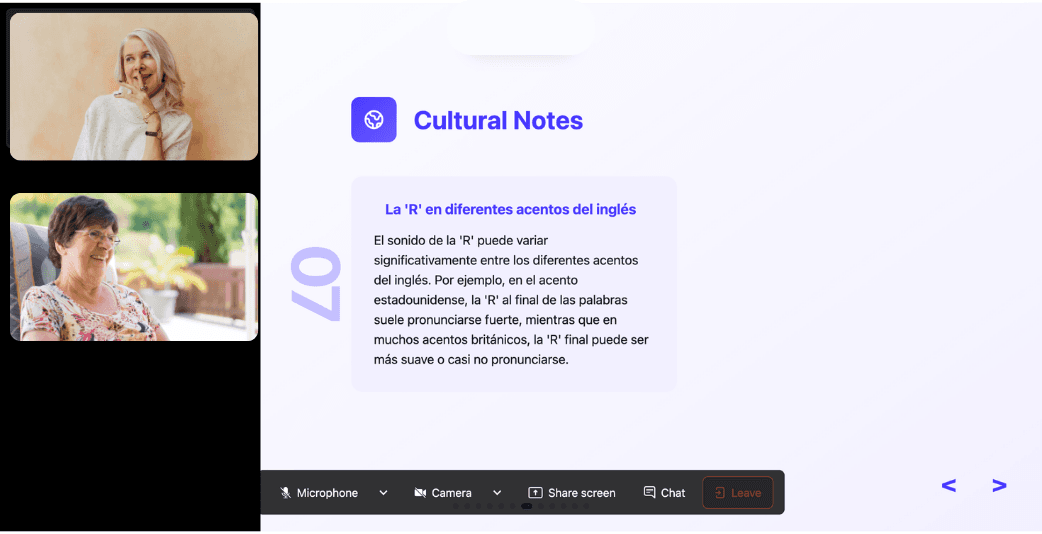
Similar Content You Might Want To Read

What is the Meaning of Thee, Thou, and Thy in English?
In today's rapidly evolving linguistic landscape, we often encounter archaic expressions in classical literature that seem foreign to our modern understanding. Among these linguistic relics, the pronouns "thee," "thou," and "thy" stand as fascinating vestiges of Old English that continue to mystify contemporary readers. This article delves into the historical significance, grammatical functions, and contextual applications of these archaic pronouns, offering valuable insights for language enthusiasts and students alike.

What is the Meaning of "Art Thou" in English?
The evolution of language reflects the transformation of societies through time. Few linguistic elements demonstrate this as clearly as archaic pronouns and verb forms. Among these, the phrase "art thou" stands as a fascinating relic of earlier English—one that continues to echo through literature, religious texts, and cultural references despite falling out of everyday usage centuries ago.

Tool Names in English: 30+ Essential Household Tools
In today's increasingly globalized world, mastering technical vocabulary becomes as critical as understanding everyday conversation. This is particularly true when it comes to household tools—objects we might not use daily but are indispensable when needed. For English language learners and native speakers alike, knowing the correct terminology for these implements is valuable knowledge. This comprehensive guide examines over 30 common household tool names in English, categorized by type and function to help you easily identify these important items whether you're shopping at a hardware store, working on a DIY project, or simply trying to communicate with a handyman.

Furniture Names & Household Items Vocabulary in English
Vocabulary acquisition remains the single most critical barrier preventing English learners from achieving fluency in everyday conversations. While grammar rules provide structure, it's the specific terminology for common objects—furniture and household items—that enables genuine communication about daily life experiences. The challenge extends beyond simple memorization. Research consistently demonstrates that context-rich vocabulary learning produces 300% better retention rates compared to isolated word lists. This reality demands a strategic approach to mastering furniture names and household items vocabulary that connects terminology to practical usage scenarios.

Master Tagalog Pronunciation: 30 Tongue Twisters To Practice
Most language learners focus on grammar rules and vocabulary lists, missing a critical component that separates fluent speakers from textbook learners: phonetic precision. The difference between sounding foreign and sounding natural often comes down to mastering the subtle rhythms and sound patterns that make each language unique. Tagalog tongue twisters represent more than linguistic entertainment—they're precision instruments for developing authentic pronunciation. When you struggle through "Kumakaway sa kapawa kong Kapampangan si Kap" (Kap is waving to my fellow Kapampangan), you're not just playing with words. You're training your articulatory muscles to navigate the specific sound combinations that native speakers produce effortlessly. This matters now because traditional language learning methods often fail to address phonetic nuances. Students spend years studying Tagalog grammar but still sound distinctly foreign when speaking. The solution lies in targeted phonetic training through systematic tongue twister practice.

Best Self Study Spanish Books to Master Spanish
The Spanish learning market generates over $15 billion annually, yet 87% of learners abandon their studies within six months. This failure rate stems from one critical oversight: choosing resources that don't align with learning objectives or cognitive preferences. Self-study Spanish books remain the most cost-effective and flexible approach to language acquisition, but only when selected strategically. Spanish proficiency opens doors to communication with 500 million native speakers across 21 countries, making it the second most spoken language globally by native speakers. The economic advantage is measurable—bilingual Spanish-English speakers earn 5-20% more than monolingual counterparts in the US job market. Yet the question persists: which self-study books actually deliver results? This analysis examines the most effective Spanish self-study books based on pedagogical methodology, user completion rates, and measurable learning outcomes. The recommendations prioritize books that have demonstrated success in independent learning environments, backed by linguistic research and real-world application data.